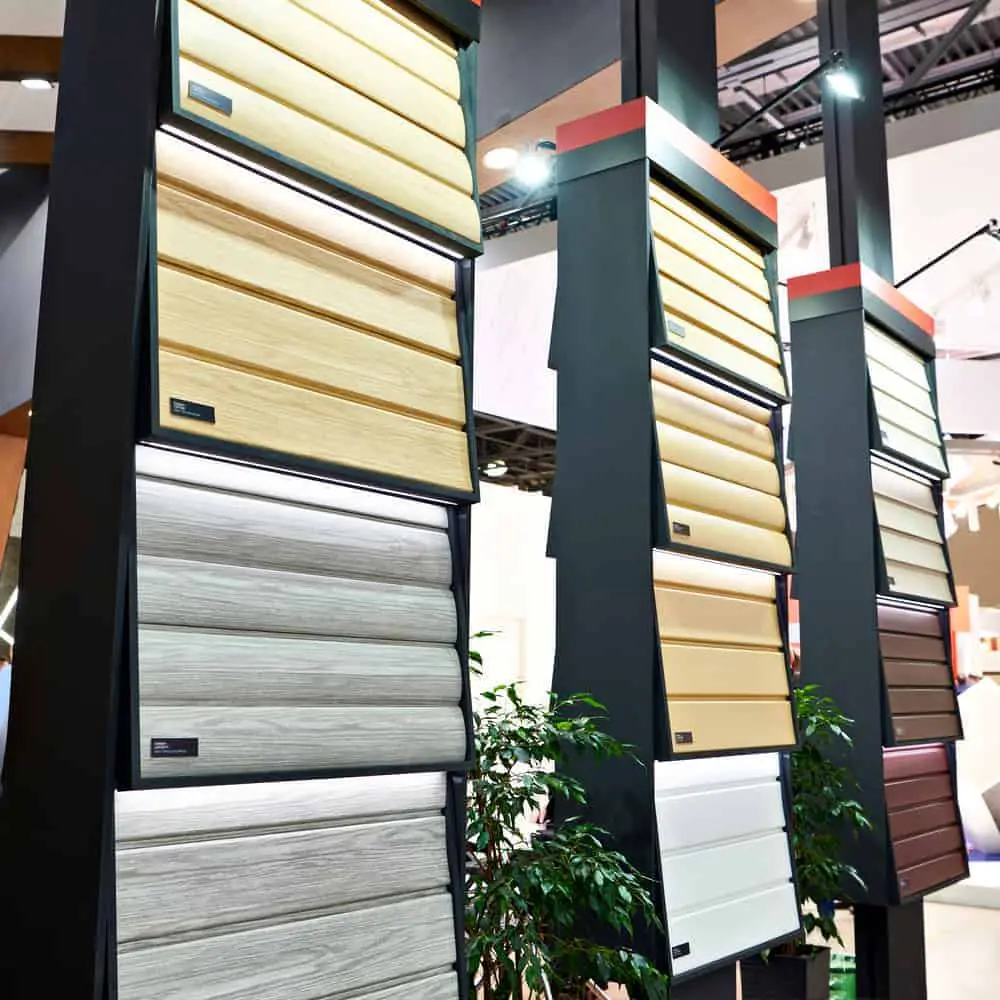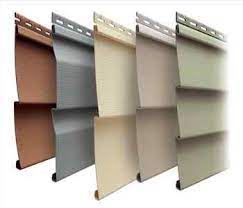Determine the length and breadth of the vinyl in a box. A box includes 14 to 24 pieces and covers 100 ft2 or 200 ft2. A box can contain 26″ x 10, 8″ ‘x 12, 16″ 12″ x 12’-6, or other sizes and amounts.
To learn more about dimensions, read our article What Are the Dimensions of a Record Album Cover?
How many squares are in a box of siding?
Usually, one box of siding contains two squares. However, a box may include 26″. This manual shows several vinyl siding sizes, the number of pieces in a case, the size of a side box, and the cost.
We’ll also show how to calculate the quantity of siding you need and how to transform it into boxes. Finally, this article helps you calculate the rough cost of a DIY.
How Many Pieces of Siding in a Square?
The number of pieces of Vinyl Siding in a box ranges from 14 to 26 because a square of siding can cover a 100-square-foot area, and a standard box of vinyl siding (usually) contains 2 (two) squares of material. In the Table below are presented several pieces of Vinyl Siding in a Box:
Number of Vinyl Siding Pieces in a Box

There are many ways to measure the amount of siding in a square, but the most common is to measure it by the number of pieces it takes to cover the square. Most squares require four pieces of siding to cover them completely. This means that if you have a square that is 10 feet by 10 feet, you would need 40 pieces of siding to cover it.
The standard vinyl siding sizes are 12′, 10′, and 8′ lengths. However, many manufacturers also offer 6′ and 4′ lengths for a more custom look. The most common widths are 7-1/4″, 9-1/4″, and 12-1/4″, but there are also some 5-1/4″ and 11-1/4″ profiles available.
The most common vinyl siding sizes are 10-foot, 12-foot, and 12-foot-6-inch lengths. However, that’s not to say that other measurements aren’t available. You can find vinyl siding in 8-foot, 16-foot, and 20-foot lengths and custom sizes. So, no matter what your building project may be, there’s a good chance you’ll be able to find the right size vinyl siding for the job.
Another thing to consider when choosing vinyl siding is profile. The profile of a piece of vinyl siding is its shape. The most common profiles are clapboard, Dutch lap, beaded clapboard, shake, shingle, scallop, and log—vertical profiles, such as board and batten or board patterns. The shape of a vinyl siding affects its width; the more comprehensive the profile, the wider the board will be.
Face coverage is another essential thing to consider when choosing vinyl siding. This is the portion of the siding that is visible and ranges from 6 inches to 12 inches. The nailing strip and interlocking flange disappear once the next course is added, and commonly add 1 inch to 1-1/4 inches to the overall panel width, depending on the manufacturer. To determine the visible exposure, measure from the underside of the profile to the bottom edge of the interlocking lip.
Once you’ve considered all these factors, it’s time to start shopping for vinyl siding! There are several different manufacturers, so compare prices and features before deciding.
How many pieces of siding are in a square?
The number of pieces of Vinyl Siding in a square ranges from 7 to 13 because a square of siding will cover 100 square feet, and one box will cover 200 square feet (14 to 26 pieces). The Table above presents several pieces of Vinyl Siding in a box in 2 squares.
Vinyl siding is a durable, lightweight, low-maintenance PVC sheet used for cladding constructions. It is Dental, wind, humidity, and bio-proof. Vinyl siding comes in various lengths, widths, profiles, textures, and colors.
Vinyl profiles are offered in horizontal and vertical orientations. Standard flat profiles are Duch lap (clapboard), beading clapboard, shaking, single, log, and vertical board pattern. The profile changes the vinyl boards’ widths. The viewable side section spans 6″ to 12″ with facial covering or exposure.
The width can be varied once the following routine is applied and often adds 1″ to 1-1/4″ of the panel. Again, the napping and the interlocking flange disappear, relying on the US manufacturer. Next, measure from the underside of the vinyl profile to the end bottom of the lip to calculate the visible exposure.
How long is a box of vinyl siding?
Standard Vinyl siding is 12-foot-long strips about 1 foot wide, based on style. The vinyl siding lengths vary across manufacturers but usually have sizes between 10, 12, and 12′-6.” They are available up to 25″ in length, depending on the brand. In addition, certain manufacturers are also being cut to measure, saving time and reducing waste.
Flake, shaking of wood, or vinyl contour are available as single, double, or triple courses, with lengths of 10″ or 12″ or as shorter panels, so the best option is to view what you have in your region.
How many vinyl siding pieces are in a box?
The quantity and length of the profile sheets and the manufacturer rely on the number of parts in a box, so it is important to verify before purchasing them. There are 14 to 26 pieces in a box. Several distributors and manufacturers networked the information in the Table above (previous chapter)
How many quadratic feet are in a siding box?
The number of square meters of a vinyl layer in the box relies on the profile length, breadth, and parts. For example, a siding card is usually 100 sq ft or 200 square feet. More comprehensive panels usually cover 200 ft2, while thinner panels cover 100 ft2.
A square is a building term typically known as 100 square meters. In most vinyl siding boxes, 1 or 2 squares are available, 100 ft2 or 200 ft2. The siding length and width determine the number of parts to cover 1 square.
Divide 100 ft2 by one sheet of square images to find the number of pieces. One piece is covered in terms of the width of the face-covering or exposure of a single sheet translated to feet and increased by length. The Table below shows the number sheets for various square profile widths and lengths.
What’s a Vinyl Siding Box like?
Side pricing varies on the size, profile, color, fabricator, dealer, and siding quality. A basic vinyl square will cost $90 – $145, a better range from $126 to $190, and a premium or the best from $180 to $250. The pricing will be double that for a square if the package includes two squares of siding. Direct purchases by the manufacturer or distributor are frequently cheaper than through a box office.

How can I calculate the number of boxes I need?
Determine the square footage of the surfaces to be covered to calculate the number of boxes necessary. For example, some contractors take the building’s perimeter, increase it by the wall height, and add the gable end area.
Identify and remove the aggregate entrance and window surface area from the wall surface. It is helpful to draw out every wall’s shape and appearance and add the dimensions as they are obtained.
The walls must be overlapped by an inch or longer than the sheet. Then, as it gets chilly, add 3/8″ to the overlap when the vinyl contracts. Furthermore, the waste factor is 10 and 15% because of the distance between apertures, corners, and wall lengths. Many vinyl siding providers provide a material calculator, but dimensional information is still required, making it an excellent starting point for calculations.
When the area is covered, the entrance area has been removed, and the waste factor of 10 or 15 percent has been applied, an approximate estimate of the square feet must be covered. Then, as the siding allows, you split the space by 100 or 200 ft2 in boxes to calculate the number of boxes. Remember to complete the following box. Unless a particular purchase is made, most shops get undamaged returns.
Square Footage vinyl side calculator
For a land area calculation of the vinyl side, the dimensions of each wall, minus the windows and doors, must be covered. Most vendors offer online estimation calculators. In the expectation that you purchase it from certain providers, the service is free, while others charge it and pay the charge if you buy from them. Look for one that calculates the various walls and needs the measurement or area of the window and door, not simply the number of openings; when picking an online calculator, they are more exact. A decent calculator can also identify other siding components needed for the job, which is crucial if the color is not usually supplied.
How do you hang window boxes on vinyl siding without drilling?
To hang window boxes on vinyl siding without drilling, you must bypass the drilling using vinyl siding hooks. In the first step, you need to slide the hooks into the siding seam, and then you will be ready to hang your planter.
Conclusion
The number of vinyl parts within a container depends upon the size and height of the features. A box generally has 14 to 24 panels, covers 100 ft2 and 200 ft2, or 1 or 2, and costs between $90 and $250 a square. The measurements and mathematics are hopefully necessary to determine how many sidings you know better. You may then have a better idea of how long the project will take and its cost.
- Facebook Ads to Get Followers! - December 27, 2024
- ClickUp vs. Slack - December 20, 2024
- Mastering E-Commerce Analytics: A Blueprint for Success




